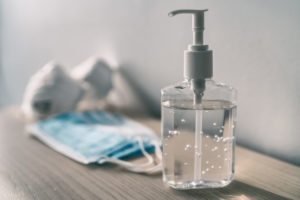Are More Civil Money Penalties the Answer?

Alan C. Horowitz, Esq., RN
In an August 14, 2020, press release, the Centers for Medicare and Medicaid Services (CMS) announced that it has imposed more than $15 million in civil money penalties (CMPs) on more than 3,400 nursing homes during the COVID-19 pandemic.
The CMPs were predicated on either noncompliance with federal requirements regarding infection control or a failure to report COVID-19-related data. Additionally, CMS noted that the number of “immediate jeopardy” level deficiencies for infection control had tripled to more than 180 deficiencies since last year.
(The federal regulations define “immediate jeopardy” as a situation where a nursing home’s noncompliance with one or more Requirements of Participation [ROP] has caused, or is likely to cause, serious injury, harm or death to a resident.)
CMS noted that since March 4, 2020, infection control surveys were conducted in more than 15,276 nursing homes, which represents more than 99% of all Medicare-certified nursing homes.
One of the reasons undergirding the $15 million in CMPs is the fact that on June 1, 2020, CMS announced its “enhanced enforcement” policy whereby nursing homes cited with even low-level deficiencies where no actual harm occurred to a single resident, would be subjected to a per instance CMP of $5,000 to $20,000. Additionally, CMS could impose the same range – $5,000 to $20,000 per day – for as long as a facility was not in substantial compliance.
Putting things in context
It is always helpful to take a holistic view of issues and not focus only on one aspect of a much bigger picture.
The American Health Care Association/National Center for Assisted Living (AHCA/NCAL) released a survey it conducted from August 8-10, 2020. According to AHCA/NCAL, “72% of nursing homes said they won’t be able to sustain operations another year at the current pace of increased costs and revenue loss.” AHCA/NCAL’s survey also indicated that 40% of responding nursing homes indicated that they would not be able to continue to operate in six months absent a positive change in costs and revenue.
So, if 40% of nursing homes might not be able to continue to care for residents in just six months, does it make sense to impose CMPs, and in fact higher CMPs, given CMS’ recent policy of “enhanced enforcement”? Surely, that question warrants consideration.
At a time when nursing facilities across the country are facing unprecedented expenses – in large measure because of the costs of Personal Protective Equipment (PPE) supplies, staff salaries, and COVID-19 testing – one wonders what the impact will be of imposing higher and more frequent CMPs. One logical but worrisome conclusion is that sorely needed funds may be diverted from legitimate resident and staff needs.
With friends like that…
In a special conference call with nursing home stakeholders the day before the August 14th press release, CMS Administrator Seema Verma stated, “We are here to help you and support you. This isn’t a time of fines and being punitive.”
Hmm. As noted above, CMS proudly announced its “enhanced enforcement” actions (read: higher CMPs) only two months ago.
To be fair, Verma has had perhaps the most difficult challenge of any CMS administrator. The pressure from Congress, advocacy groups, providers, and consumers must be overwhelming. No other CMS administrator in our lifetime – or ever – has had to deal with a crisis of this proportion. By comparison, the Ebola outbreak was a mere blip on the radar screen compared to the COVID-19 pandemic.
Additionally, in the view of the author, Verma has made many significant and positive changes regarding the nursing home certification, enforcement and survey process. Indeed, CMS, under Verma’s leadership, has issued more than 18 separate sets of guidance in the past six months providing nursing homes with current and evolving protocols on infection prevention and control. However, the issue of higher and more frequent CMPs remains controversial.
According to the Centers for Disease Control and Prevention’s (CDC) National Healthcare Safety Network (NHSN), as of the second week in August, there were an alarming 12,000 new nursing home cases per week. Further, a stunning 45,958 nursing home residents have died from the coronavirus. In noting these sobering statistics, Verma pledged to help providers and give them whatever is needed. That sounds like good news.
Do higher and more frequent CMPs help?
If evidence existed, supporting the misguided notion that higher and higher CMPs actually benefitted residents, it would be a non-issue. The problem is that, as far as the author knows, there have never been any reliable studies or any research supporting the premise that higher CMPs in fact yield better resident outcomes.
Absent concrete evidence of the value of higher CMPs, perhaps it is time to consider another method of steering providers into full compliance with regulatory requirements.
According to Gloria Speller, RN, MSA, former CMS Deputy Associate Regional Administrator, Region III, “Punitive CMPs will not fix the problem as evidenced by no change in behavior by providers even after the imposition of CMP’s over and over again.”
Speller knows a thing or two about nursing homes. She was a Director of Nursing and even worked as a surveyor prior to her administrative positions at CMS. “CMS must realize that one cannot keep doing the same thing consistently (imposing CMPs) and expecting a different result,” she adds.
Alternatives to ever-increasing CMPs
The author has previously written about his experience when he represented CMS as Assistant Regional Counsel in CMS Region III.
When the CEO of a Philadelphia hospital held a very public mea culpa after several hospital patients died due to a series of laboratory errors, the author suggested to CMS management that instead of imposing a whopping CMP on the hospital, an alternative might be having the hospital place a significant amount of money in a dedicated quality improvement account. The funds in the hospital’s escrow account would be used only subject to CMS’ approval.
Such an alternative seems like a win-win situation. And, CMS gets the credit it deserves for allowing the hospital to do that rather than imposing a huge CMP on the hospital that, if anything, would drain valuable financial resources.
There is no shortage of alternatives to imposing CMPs. Under the federal regulatory scheme, CMS has many arrows in its quiver.
As noted by Speller, “Utilizing Directed Plans of Correction and Directed In-services by professionals experienced in infection control and regulatory expectations would be a start.” Other alternatives that CMS has occasionally used for providers needing improvement are formal Systems Improvement Agreements (SIA), which is a legally binding agreement between a facility and CMS where the facility agrees to set aside a substantial amount of funds earmarked to correct identified deficiencies. Imposing CMPs is not the only – or necessarily the best – method of achieving positive results and better resident outcomes.
Conclusion
To be clear, nursing facilities that have not demonstrated substantial compliance with all Requirements of Participation should be held accountable. Very accountable. After witnessing the ravages and havoc that the COVID-19 pandemic has wrought, it is abundantly clear that deficiencies, especially those concerning infection control, must be promptly dealt with and given the highest priority.
The most effective means enabling a provider to achieve and maintain compliance with regulatory requirements should be employed. Whether increased CMPs are the optimal method for improving resident outcomes and ensuring their safety remains an open question in the minds of many.
Given the dire financial straits many providers are facing, as noted above in the AHCA/NCAL survey, it is worth considering viable alternatives to higher CMPs. Sometimes, the carrot works better than the stick.

Alan C. Horowitz, Esq., is a partner at Arnall Golden Gregory LLP, where he focuses his legal practice on regulatory compliance for skilled nursing homes, hospices and home health agencies and manages cases where the Centers for Medicare and Medicaid Services (CMS) has imposed an enforcement action. He is a former assistant regional counsel Office of the General Counsel, U.S. Department of Health and Human Services. As counsel to CMS, he was involved with hundreds of enforcement actions and successfully handled appeals before administrative law judges, the HHS Departmental Appeal Board and in federal court. He also has clinical healthcare experience as a registered respiratory therapist and registered nurse. He can be reached at alan.horowitz@agg.com.
Related Articles
Topics: Administration , Advisory Board , Advocacy , Alan C. Horowitz , Departments , Executive Leadership , Facility management , Featured Articles , Infection control , Medicare/Medicaid , Policy , Regulatory Compliance , Resident Care , Risk Management









